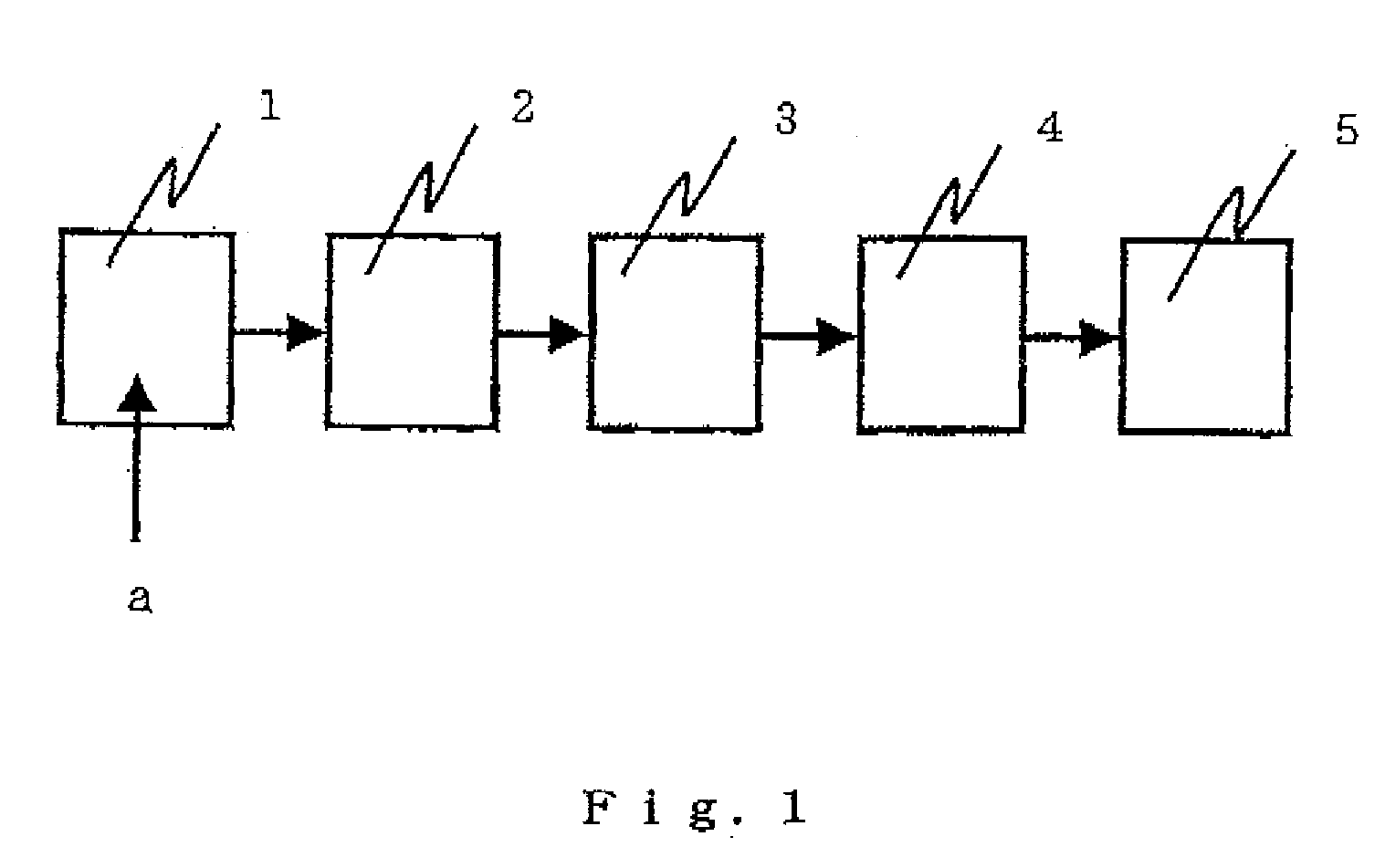Normal-pressure cation-dyeable polyester, textile product made from the same, and production method for the same
a technology of cation-dyeable polyester and production method, applied in the field of normal, can solve the problems of deteriorating spinnability, increasing the polymerization degree, and the inability to dye polyethylene fibers, and achieves the effects of reducing costs, reducing production costs, and stable quality
- Summary
- Abstract
- Description
- Claims
- Application Information
AI Technical Summary
Benefits of technology
Problems solved by technology
Method used
Image
Examples
example 1
[0085]Terephthalic acid, ethylene glycol and SIPE (2.5 mol % based on the total of acid components) were supplied into the slurrying tank 1, and 320 ppm of titaniun dioxide as a delustering agent, 45 ppm of trimethyl phosphate and 800 ppm of sodium acetate trihydrate based on the amount of a polymer were added to the resulting slurry. After the pH of the resulting slurry was adjusted to 5.0, the slurry was continuously supplied into the first esterification tank 2, and subjected to a pressurized reaction at a reaction temperature of 270° C. at a gage pressure of 88.2 kPa with the molar ratio of the ethylene glycol to dicarboxylic acid components being adjusted to 1.0 to provide a prepolymer having an esterification ratio of 85%. Then, the prepolymer was continuously supplied into the second esterification tank 3, and 3 wt % of polyethylene glycol having a molecular weight of 200 based on the amount of the polymer was continuously added to the prepolymer. Then, 0.2 wt % of a hindered...
examples 15 to 17
[0089]Polyesters were prepared through the polycondensation reaction in substantially the same manner as in Example 1, except that the intrinsic viscosity ratios thereof were adjusted to values shown in Table 3. The results of the spinnability evaluation of the polyesters thus prepared are shown in Table 3.
example 18
[0090]A slurry of terephthalic acid and ethylene glycol was prepared, and transferred to an esterification tank, in which an esterification reaction was allowed to proceed to provide a prepolymer having an esterification ratio of 96.5%. After the prepolymer was transferred to a polymerization tank, 2.5 mol % of SIPE based on the total of dicarboxylic acid components and 3 wt % of a polyethylene glycol having a molecular weight of 200 based on the weight of a polyester were added to the prepolymer, and a polyester was prepared through a polycondensation reaction. The intrinsic viscosity ratio and the result of the spinnability evaluation of the polyester thus prepared are shown in Table 3.
TABLE 3PolymerizationIntrinsicExamplemethodviscosity ratioSpinnability15Direct continuous1.03Δpolymerization16Direct continuous1.02◯polymerization17Direct continuous1.008◯polymerization18Direct batch1.01Δpolymerization
PUM
| Property | Measurement | Unit |
|---|---|---|
| Temperature | aaaaa | aaaaa |
| Fraction | aaaaa | aaaaa |
| Equivalent per mass | aaaaa | aaaaa |
Abstract
Description
Claims
Application Information
 Login to View More
Login to View More - R&D
- Intellectual Property
- Life Sciences
- Materials
- Tech Scout
- Unparalleled Data Quality
- Higher Quality Content
- 60% Fewer Hallucinations
Browse by: Latest US Patents, China's latest patents, Technical Efficacy Thesaurus, Application Domain, Technology Topic, Popular Technical Reports.
© 2025 PatSnap. All rights reserved.Legal|Privacy policy|Modern Slavery Act Transparency Statement|Sitemap|About US| Contact US: help@patsnap.com

